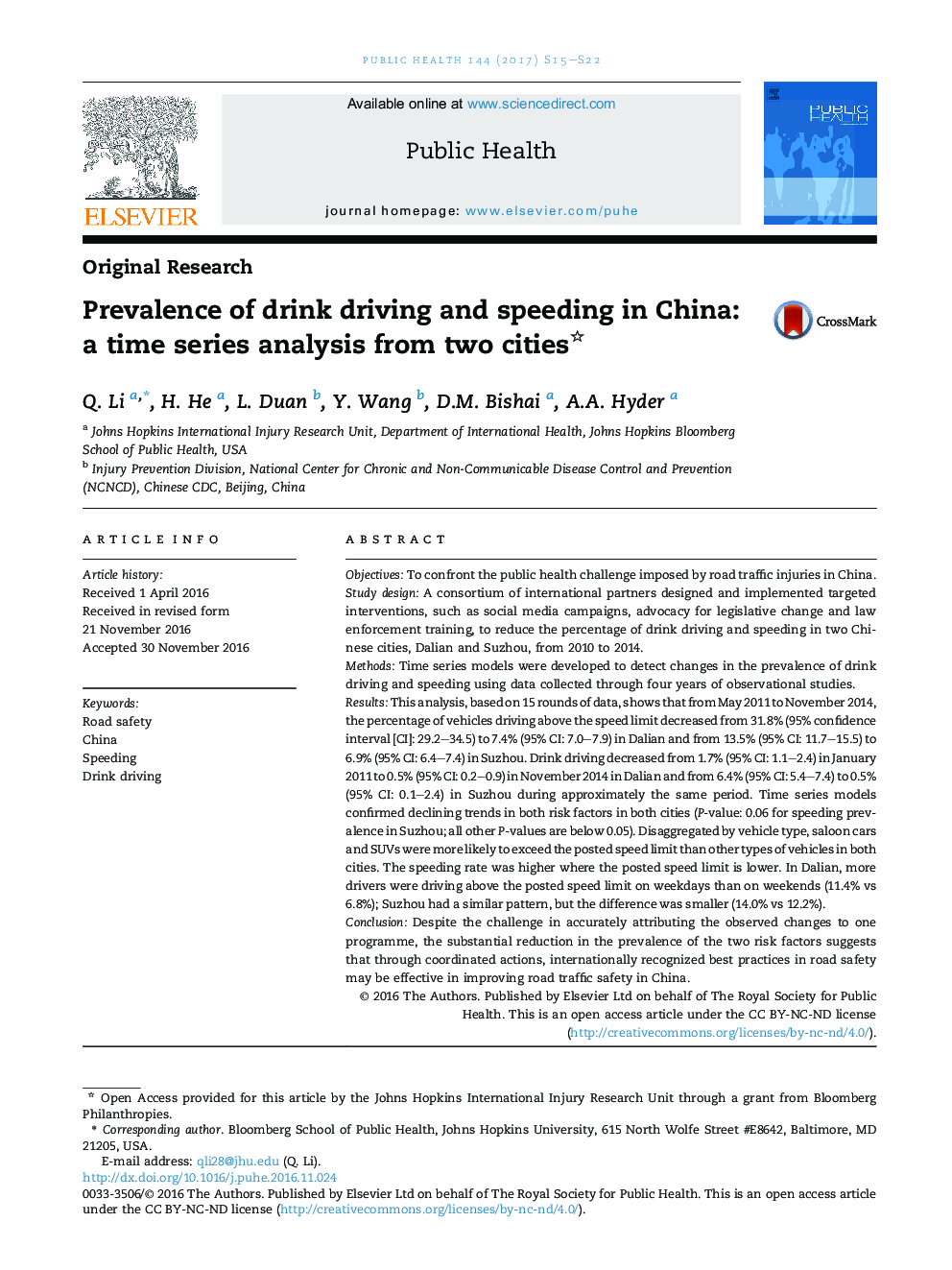| Article ID | Journal | Published Year | Pages | File Type |
|---|---|---|---|---|
| 5122741 | Public Health | 2017 | 8 Pages |
â¢A consortium of international partners designed and implemented interventions to improve road safety in two Chinese cities.â¢May 2011 to Nov 2014, % vehicles above speed limit decreased from 31.8% to 7.4% in Dalian; from 13.5% to 6.9% in Suzhou.â¢Drink driving decreased from 1.7% in Jan 2011 to 0.5% in Nov 2014 in Dalian; from 6.4% to 0.5% in Suzhou.
ObjectivesTo confront the public health challenge imposed by road traffic injuries in China.Study designA consortium of international partners designed and implemented targeted interventions, such as social media campaigns, advocacy for legislative change and law enforcement training, to reduce the percentage of drink driving and speeding in two Chinese cities, Dalian and Suzhou, from 2010 to 2014.MethodsTime series models were developed to detect changes in the prevalence of drink driving and speeding using data collected through four years of observational studies.ResultsThis analysis, based on 15 rounds of data, shows that from May 2011 to November 2014, the percentage of vehicles driving above the speed limit decreased from 31.8% (95% confidence interval [CI]: 29.2-34.5) to 7.4% (95% CI: 7.0-7.9) in Dalian and from 13.5% (95% CI: 11.7-15.5) to 6.9% (95% CI: 6.4-7.4) in Suzhou. Drink driving decreased from 1.7% (95% CI: 1.1-2.4) in January 2011 to 0.5% (95% CI: 0.2-0.9) in November 2014 in Dalian and from 6.4% (95% CI: 5.4-7.4) to 0.5% (95% CI: 0.1-2.4) in Suzhou during approximately the same period. Time series models confirmed declining trends in both risk factors in both cities (P-value: 0.06 for speeding prevalence in Suzhou; all other P-values are below 0.05). Disaggregated by vehicle type, saloon cars and SUVs were more likely to exceed the posted speed limit than other types of vehicles in both cities. The speeding rate was higher where the posted speed limit is lower. In Dalian, more drivers were driving above the posted speed limit on weekdays than on weekends (11.4% vs 6.8%); Suzhou had a similar pattern, but the difference was smaller (14.0% vs 12.2%).ConclusionDespite the challenge in accurately attributing the observed changes to one programme, the substantial reduction in the prevalence of the two risk factors suggests that through coordinated actions, internationally recognized best practices in road safety may be effective in improving road traffic safety in China.
